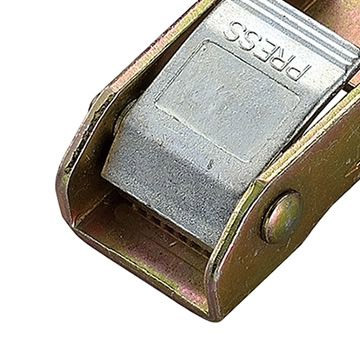self drilling plastic anchors
Understanding Self-Drilling Plastic Anchors A Comprehensive Guide
Self-drilling plastic anchors are an essential tool for anyone looking to hang items securely on drywall or other similar surfaces. These innovative fasteners simplify the installation process by eliminating the need for pre-drilling, making them a favorite among DIY enthusiasts and professionals alike.
What Are Self-Drilling Plastic Anchors?
Self-drilling plastic anchors, often referred to simply as self-drilling anchors, are designed to be installed directly into the material without the requirement of a pilot hole. They typically feature sharp, fluted tips that allow them to penetrate drywall easily. These anchors are made from durable plastic, allowing them to hold considerable weight without splitting or damaging the surrounding material.
Advantages of Self-Drilling Plastic Anchors
1. Ease of Use One of the primary advantages of self-drilling plastic anchors is their ease of installation. Homeowners and professionals can quickly secure objects to walls without the need for specialized tools or invasive procedures. All you need is a screwdriver to get the job done.
2. Versatility Self-drilling anchors are versatile and can be used for a variety of applications, from hanging pictures and mirrors to securing shelves and curtain rods. They work well with light to medium-weight items, making them suitable for many household tasks.
3. No Pre-Drilling Required Traditional anchors require the hassle of drilling pilot holes, which can often lead to errors or misalignment. Self-drilling anchors eliminate this step, saving both time and effort.
4. Cost-Effective These anchors tend to be inexpensive, making them an economical choice for both one-time projects and larger home renovations. Their affordability makes them accessible for all types of budgets.
5. Minimal Wall Damage Because they drill into the wall rather than expanding, self-drilling anchors create less damage to the drywall compared to traditional expansion anchors. This means less repair work if you ever decide to remove the installed items.
How to Install Self-Drilling Plastic Anchors
self drilling plastic anchors

Installing self-drilling plastic anchors is a straightforward process
1. Select the Right Anchor Choose an anchor that fits the weight of the item you wish to hang. Check the packaging for weight capacity specifications.
2. Choose the Right Location Determine where you want to place the anchor. Make sure it’s aligned properly with your desired object.
3. Install the Anchor Using a screwdriver, push the self-drilling anchor into the wall until the head is flush with the surface. Apply even pressure and rotate as needed. Make sure not to force it, as this may damage the anchor.
4. Insert the Screw Once the anchor is flush, insert the screw into the anchor. Tighten it until it is secure but be careful not to overtighten, as this can strip the anchor or cause it to break.
5. Hang Your Item After the screw is in place, you can hang your item securely on the provided screw head.
Limitations of Self-Drilling Plastic Anchors
While self-drilling plastic anchors offer numerous benefits, they do have limitations. They are primarily suitable for drywall and don't perform as well in masonry or concrete surfaces. Moreover, they may not support heavy loads, so it’s crucial to adhere to the weight specifications. For heavier items, consider using metal anchors or toggle bolts designed for higher weight capacities.
Conclusion
Self-drilling plastic anchors are an invaluable addition to any toolkit, providing a simple and effective solution for wall mounting tasks. Their ease of use, versatility, and cost-effectiveness make them ideal for both DIY projects and professional applications. By understanding how to select and install these anchors effectively, you can ensure your items are hanging securely and safely. Embrace the convenience of self-drilling plastic anchors to elevate your home improvement projects with confidence!
-
Weatherproof Plastic Expansion Anchors for OutdoorNewsJun.06,2025
-
Sustainability in the Supply Chain: Eco-Friendly TEK Screws ProductionNewsJun.06,2025
-
Load-Bearing Capacity of External Insulation FixingsNewsJun.06,2025
-
Double Head Bolts: Enhancing Efficiency in Industrial MachineryNewsJun.06,2025
-
Corrosion Resistance in Chipboard Screws: Coatings for Wholesale DurabilityNewsJun.06,2025
-
Butterfly Toggle Bolts : Enhancing Structural ResilienceNewsJun.06,2025
